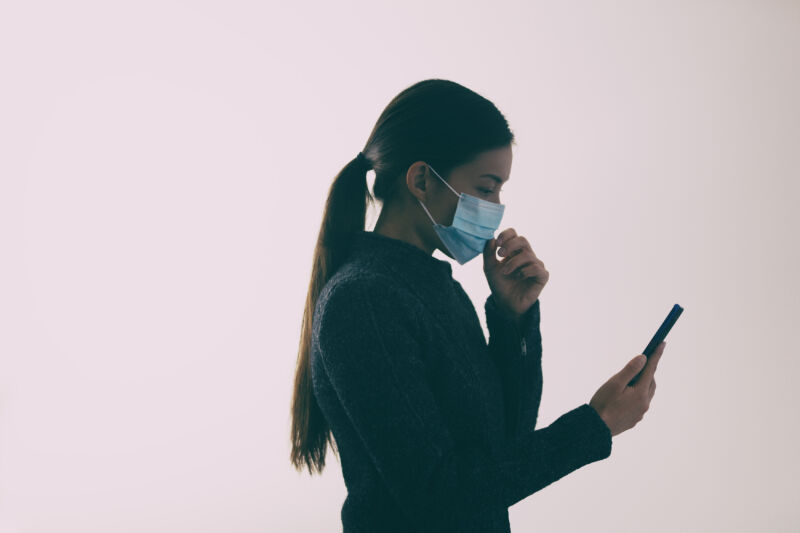
It’s summer 2021. You rent a house in the countryside with a bunch of friends for someone’s birthday. The weather’s gorgeous that weekend, so mostly you’re all outside—pool, firepit, hammock, etc.—but you do all sleep in the same house. And then on Tuesday, you get an alert on your phone that you’ve been exposed to SARS-CoV-2, the virus that causes COVID-19. How likely are you to now have it?
To answer that question, a group of statisticians, data scientists, computer scientists, and epidemiologists in the UK analyzed 7 million people who were notified that they were exposed to COVID-19 by the NHS COVID-19 app in England and Wales between April 2021 and February 2022. They wanted to know if—and how—these app notifications correlated to actual disease transmission. Analyses like this can help ensure that an app designed for the next pathogen could retain efficacy while minimizing social and economic burdens. And it can tell us more about the dynamics of SARS-CoV-2 transmission.
Over 20 million quarantine requests
The NHS COVID-19 app was active on 13 to 18 million smartphones per day in 2021. It used Bluetooth signals to estimate the proximity between those smartphones while maintaining privacy and then alerted people who spent 15 minutes or more at a distance of 2 meters or less from a confirmed case. This led to over 20 million such alerts, each of which came with a request to quarantine—quite a burden.
The researchers found that the app did, in fact, accurately translate the duration and proximity of a COVID-19 exposure to a relevant epidemiological risk score. The app assessed a contact’s risk by multiplying the length of contact, the proximity of contact, and the infectiousness of the index case as determined by how long it had been since the index case started showing symptoms or tested positive.
There was an increasing probability of reported infection as the app’s risk score increased: more contacts whom the app deemed were at a high transmission risk did go on to test positive for COVID-19 within the following two weeks than those who were notified but had lower risk levels. (That’s positive tests that were reported by using the app. Some of the high-risk people probably did not test at all, did not report their test results, or did not report them within the allotted time. So this is an underestimation of the correlation between notification of risk and infection.)
More exposure = higher risk
When the researchers separated the factors contributing to the risk of an exposure, they found that duration was the most important indicator. Household exposures accounted for 6 percent of all contacts but 41 percent of transmissions.
One caveat: The app didn’t record any contextual variables that are known to impact transmission risk, like if people live in an urban or rural area, was the meeting indoors or outdoors, was it during the week or over the weekend, was anyone vaccinated, etc. Including such data could make risk assessment more accurate.
Based on their work, the researchers suggest that an “Amber Alert” stage could have been introduced to the app, in which people deemed to have an interim degree of risk would be guided to get a PCR test rather than immediately jumping to quarantine. Including this intermediate Amber Alert population could have significantly reduced the socioeconomic costs of contact tracing while retaining its epidemiological impact or could have increased its effectiveness for a similar cost. Performing analyses like this early on in the next pandemic to determine how it is transmitted might minimize illness and strain on society.
Nature, 2023. DOI: 10.1038/s41586-023-06952-2
https://arstechnica.com/?p=1992331

